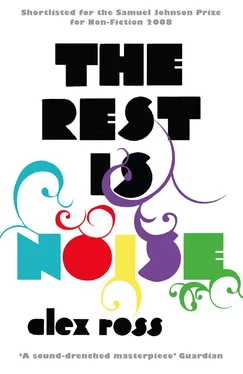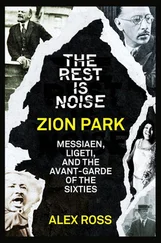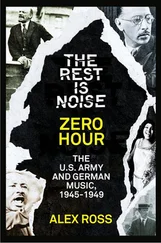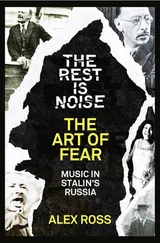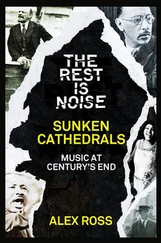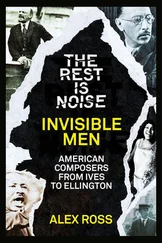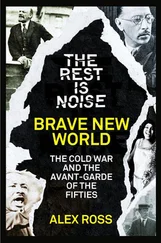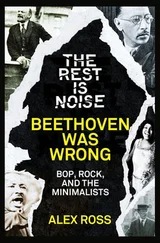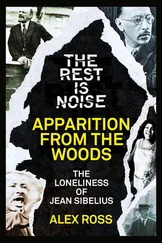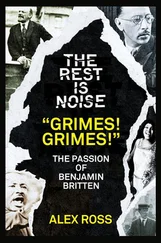Stravinsky, too, cocked an ear to jazz. His guide was the conductor Ernest Ansermet, who toured America with the Ballets Russes in 1916 and wrote excitedly to Stravinsky about the “unheard-of music” that he was encountering in cafés. ( Just as the Ballets Russes was arriving for its tour, the Creole Band, pioneers and popularizers of New Orleans jazz, was playing at the Winter Garden in New York. Later that year, the jazz historian Lawrence Gushee reveals, both the Ballets Russes and the Creole Band played on the same night in Omaha, Nebraska.) Ansermet brought back to Switzerland a pile of recordings and sheet music, including, possibly, Jelly Roll Morton’s “Jelly Roll Blues.” Stravinsky played some of these for Romain Rolland, calling them “the musical ideal, music spontaneous and ‘useless,’ music that wishes to express nothing.” (“Dance must express nothing,” Cocteau had written to him back in 1914.) If nothingness wasn’t really what Jelly Roll had in mind, it did explain why so many people responded to jazz during the last bloody years of the Great War: it offered a clean slate to a shellshocked culture.
In 1918, Stravinsky wrote a puppet-theater piece titled Histoire du soldat, or Story of a Soldier, which had a decisive influence on younger composers in France, America, and Germany. It is a down-to-earth Faustian tale of a soldier-fiddler who sells his soul to the devil in exchange for untold riches. Later, Stravinsky would tell the New York press that the instrumentation was copied from jazz ensembles, and, indeed, the combination of violin, cornet, trombone, clarinet, bassoon, double bass, and percussion resembles the makeup of the Creole Band (which had a guitar in place of a bassoon). The first scene of Histoire starts with a simple, plucked, one-two-three-four pulse. The violin breaks up and rearranges this beat, entering on a four, then on a three, then on a two, in a triplet motion, then in phrases of five and three, then in yet more complicated phrases of odd-numbered beats. The interplay between a pulsing bass figure and freewheeling solos suggests a café-band performance, though perhaps not of jazz as such.
As Stravinsky later confessed, Histoire was a Russian émigré’s dream of jazz, rather than a reflection of the real thing. Of course, he had written the Rite the same way, assembling a fantasy world from scraps of evidence.
By official reckoning, le jazz lasted all of three years. Cocteau called it to a halt in 1920, announcing “the disappearance of the skyscraper” and the “reappearance of the rose.” That same year Auric explained in the pages of the journal Le Coq that his piece Adieu New-York, a fox-trot for piano, was his farewell to jazz, which had served its purpose. Auric’s new slogan was “Bonjour Paris!” By 1927, even Milhaud had lost interest in the mysteries of Harlem. “Already the influence of jazz has passed,” he wrote, “like a beneficial storm that leaves behind a clear sky and stable weather.”
What next? Lynn Garafola has introduced two useful terms to describe music and dance in the twenties: “period modernism” and “lifestyle modernism.” Period modernism indicates the cultivation of pre-Romantic styles, notably the orderly and stylish Baroque. The trend was already well under way in turn-of-the-century Paris, when Debussy extolled Rameau, Satie revived Gregorian chant, and Reynaldo Hahn, Proust’s lover, wrote neo-Handelian arias. But the retrospective impulse intensified after the war, perhaps as a way of escaping recent history. Diaghilev, not Cocteau, took the lead in promoting period modernism: he had collected tattered scores by the likes of Cimarosa, Scarlatti, and Pergolesi and began editing them for modern performance, hiring favorite composers to do the orchestration. In 1920, Diaghilev asked Stravinsky to arrange ballet music from a sheaf of scores attributed to Pergolesi. Stravinsky did more than arrange: by elongating and truncating notes here and there, by introducing discontinuities, irregularities, angularities, and anomalies, he emerged with Pulcinella, a new type of ultramodish Stravinsky confection.
A less celebrated guru had already nudged Stravinsky toward the classical past. This was the Princesse de Polignac, née Winnaretta Singer, heiress to the Singer sewing-machine fortune, whose story is chronicled in Sylvia Kahan’s book Music’s Modern Muse.
Singer’s early passion was for Wagner, but she later developed a consuming love of Bach. In a turn of phrase that captures the inborn melancholy of period modernism, she wrote that a Bach chorale “reconstitutes the past, and proves to us that we had a reason for living on this rock: to live in the beautiful kingdom of sounds.” At her salons, new works were often paired with Bach’s, and the former began sounding like the latter. Oddly, the Princesse received inspiration from Richard Strauss, whose use of a thirty-six-instrument orchestra in Ariadne auf Naxos gave her the idea that “the days of big orchestras were over.” She promptly asked Stravinsky for a score requiring thirty to thirty-six instruments, even specifying the instrumentation, though she wisely seems not to have mentioned the Strauss angle. (Decades later, Stravinsky snapped to Robert Craft, “I would like to admit all Strauss’s operas to whichever purgatory punishes triumphant banality.”) Aloof, intellectual, secretly lesbian, Singer had the personality of an artist herself. She sat in a high-backed chair in front of the rest of the audience so that she would not be distracted. Much displeased her, nothing surprised her. When the instruments for Les Noces were delivered to her house on avenue Henri-Martin, a butler announced, in horrified tones, “Madame la Princesse, four pianos have arrived,” to which she replied, “Let them come in.”
If the Hôtel Singer-Polignac was the clearing house of period modernism, the racier salons—those of Étienne de Beaumont, Charles and Marie-Laure de Noailles, Elisabeth de Clermont-Tonnerre, and the outrageous Natalie Barney—catered to lifestyle modernism, the spirit of high fashion, low culture, and sexual play. The rules of the game were laid down by the Ballets Russes, which in 1922 moved its center of operations to the playboy capital of Monte Carlo and began receiving support from the Société des Bains de Mer. The exemplary lifestyle production was Le Train bleu, which took its name from the train that conveyed the beautiful people from Paris to the Riviera. The action involved a gigolo, his flapper girl, a golfer, and a female tennis champion, all attired in sportswear by Coco Chanel. Milhaud, who wrote the music, was asked to tone down his polytonal harmonies so as not to ruffle the high-society audience. “Le Train bleu is more than a frivolous work,” Cocteau said. “It is a monument to frivolity!” It was also a monument to the beauty of a boy, in the form of Anton Dolin. Diaghilev had long catered to a gay subculture, but he now became rather brazen, outfitting his favorite dancers in tight bathing suits or minuscule Grecian shorts.
In this giddy ambience, Poulenc came into his own. “What’s good about Poulenc,” Ravel said, “is that he invents his own folklore.” Poulenc, too, was gay, and held a kind of coming-out party in his own Diaghilev ballet, Les Biches. It is easy enough to read between the lines of his subsequent description of the scenario—a “modern fêtes galantes in a large, all-white country drawing room with a huge sofa in Laurencin blue as the only piece of furniture. Twenty charming and flirtatious women frolicked about there with three handsome, strapping young fellows dressed as oarsmen.” Bronislava Nijinska’s original choreography, as Lynn Garafola describes it, made the innuendo fairly explicit: the strapping young fellows spent more time looking at one another than at the women, and the Hostess tried to revalidate her beauty by posing with the boys.
Читать дальше
